The Art of Data Normalization: Boosting Accuracy and Insight in Analysis
Introduction
Embarking on the journey of data analysis unveils a crucial ally: data normalization. In the realm of information processing, the need to standardize and harmonize data cannot be overstated. This blog post delves into the why and how of data normalization, demystifying its role in enhancing analytical precision. From addressing common misconceptions to navigating the challenges of diverse datasets, we explore the nuances that make data normalization an indispensable step in any robust analytical framework. Join us on this exploration as we unravel the intricacies, benefits, and best practices that define the art of data normalization, a key player in the quest for accurate insights and optimized machine learning models.
Understanding Data Normalization
Data normalization in the realm of data analysis involves transforming variables to a standardized scale, ensuring consistency and comparability. It is a pivotal step to enhance the accuracy and reliability of analytical processes.
Normalization is the process of adjusting numerical data to a common scale without altering the inherent patterns. This facilitates meaningful comparisons and prevents skewed interpretations due to varying scales among features.
Normalization techniques
- Min-Max Scaling: This technique transforms data to a predefined range, often between 0 and 1. It maintains the relative relationships between data points while placing them within a standardized interval.
- Z-Score Normalization: Also known as standardization, Z-score normalization adjusts data to have a mean of 0 and a standard deviation of 1. This method is effective in mitigating the impact of outliers and ensuring a Gaussian distribution of the data.
Why Normalize Data?
Data normalization serves as a crucial preprocessing step in various analytical endeavors, offering several key advantages.
- Ensuring uniformity in data:
Normalization establishes a consistent scale across diverse variables, preventing discrepancies that may arise from disparate units or scales. This uniformity fosters a level playing field for comprehensive data analysis.
- Facilitating meaningful comparisons:
By bringing data onto a standardized scale, normalization allows for more accurate and insightful comparisons between different features. This is especially vital when assessing the relative importance of variables in a dataset.
- Mitigating the impact of outliers:
Normalization techniques help mitigate the undue influence of outliers by scaling down extreme values. This ensures that statistical measures and machine learning algorithms are less sensitive to the presence of anomalous data points.
- Enhancing machine learning model performance:
Normalized data often leads to improved model performance. Machine learning algorithms, particularly those sensitive to the scale of input features, benefit from normalization as it aids in faster convergence, better weight interpretation, and overall enhanced predictive accuracy.
Key Benefits of Data Normalization
Data normalization offers a range of benefits that significantly contribute to the effectiveness of analytical models and data-driven decision-making.
- Improved model convergence:
Normalization aids in accelerating the convergence of machine learning models during training. By bringing features to a standardized scale, optimization algorithms converge more swiftly, reducing training time and resource consumption.
- Increased interpretability of model coefficients:
Normalized data makes it easier to interpret the coefficients of a model. When variables are on a similar scale, the impact of each feature on the model's output becomes more transparent, enhancing the interpretability and insights derived from the model.
- Robustness to variations in input data:
Normalization enhances a model's ability to handle variations in input data. It ensures that the model's performance is more consistent across different datasets, making the analysis and predictions more reliable and robust.
- Enhanced data quality and accuracy:
By mitigating the influence of scale variations and outliers, normalization contributes to improved data quality and accuracy. This, in turn, leads to more reliable insights and predictions, fostering greater confidence in the outcomes of analytical processes.
Common Misconceptions about Data Normalization
Misconceptions surrounding data normalization often arise, but addressing these myths is crucial for a more informed approach to data analysis.
- Addressing concerns about information loss:
One common misconception is the fear of information loss during normalization. However, reputable normalization techniques carefully preserve the relative relationships between data points, ensuring that critical information is retained while still achieving a standardized scale.
- Dispelling myths related to normalization affecting all types of data equally:
Not all data normalization techniques impact different types of data equally. It's essential to dispel the myth that a one-size-fits-all approach exists. Various normalization methods cater to specific data characteristics, such as continuous or categorical variables, ensuring a tailored and effective normalization process for diverse datasets.
Best Practices for Data Normalization
Effective data normalization requires careful consideration of various factors. Adhering to best practices ensures optimal results in diverse analytical scenarios.
- Choosing the right normalization method for the dataset:
Selecting an appropriate normalization method is crucial. Consider the nature of the data—whether continuous or categorical—and the characteristics of the variables. Techniques like Min-Max scaling or Z-score normalization may be suitable, and the choice should align with the specific requirements and distribution patterns of the dataset.
- Handling categorical variables during normalization:
Categorical variables pose a unique challenge during normalization. Applying standard methods directly may not be suitable. Instead, employ techniques like one-hot encoding for categorical variables before normalization. This ensures that all types of variables are treated appropriately, preserving the integrity of the data while achieving the desired standardization.
Challenges and Considerations
Navigating the landscape of data normalization involves acknowledging potential pitfalls and addressing challenges to ensure a robust analytical foundation.
- Potential pitfalls of improper normalization:
Improper normalization can introduce challenges such as information distortion and model instability. Overlooking the impact of outliers or applying normalization indiscriminately may lead to unintended consequences. It's essential to be mindful of these pitfalls to maintain the integrity of the data and the reliability of subsequent analyses.
- Addressing challenges in normalizing diverse datasets:
Diverse datasets often present challenges, as normalization techniques may need to be adapted based on the data's characteristics. Striking a balance between preserving essential information and achieving standardization is crucial. Customizing normalization approaches for different data types, structures, and distributions helps address the inherent challenges posed by diverse datasets.
Conclusion
In conclusion, data normalization emerges as a vital process in data analysis, offering a myriad of benefits, from improved model performance to enhanced interpretability. While debunking common misconceptions and emphasizing best practices, it's essential to acknowledge the challenges of improper normalization and the nuances of dealing with diverse datasets.
As data continues to play a pivotal role in decision-making, the significance of effective normalization cannot be overstated. It not only ensures the reliability and accuracy of analyses but also lays the groundwork for robust machine learning models.
For those seeking a streamlined approach to data normalization and comprehensive data management, consider exploring Arkon Data Platform. With its advanced features and user-friendly interface, Arkon simplifies the complexities of data normalization, providing a powerful solution for data-driven success.


